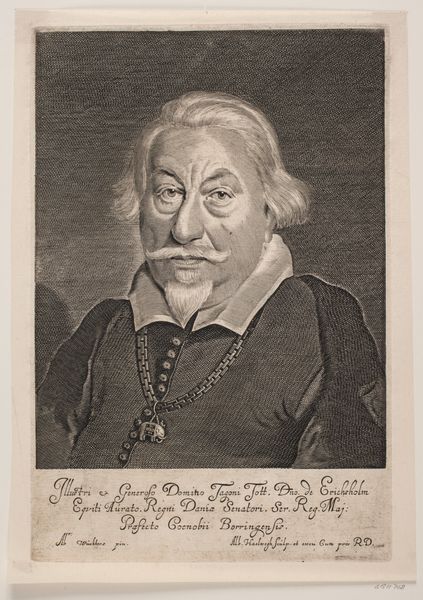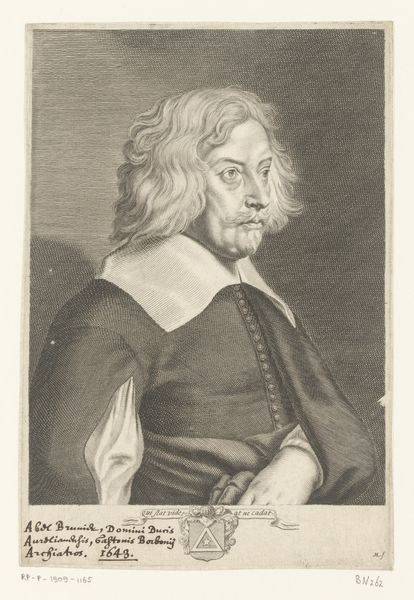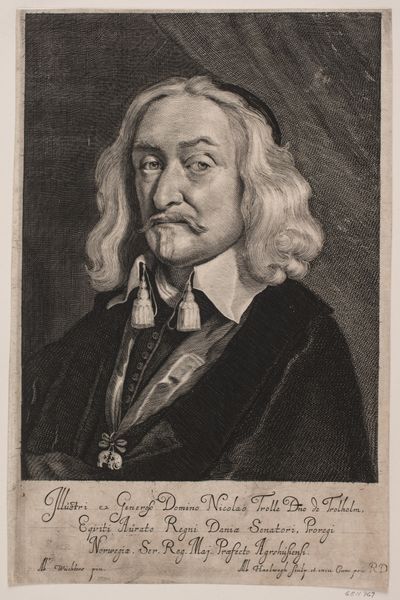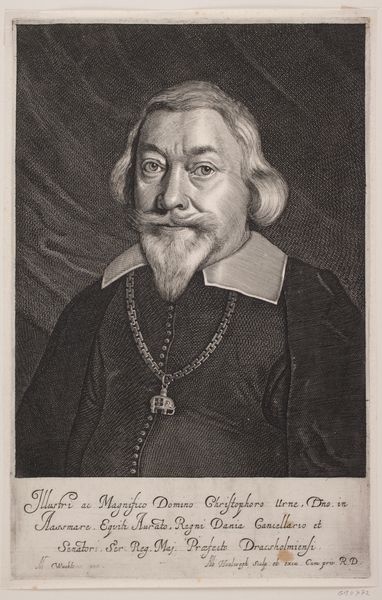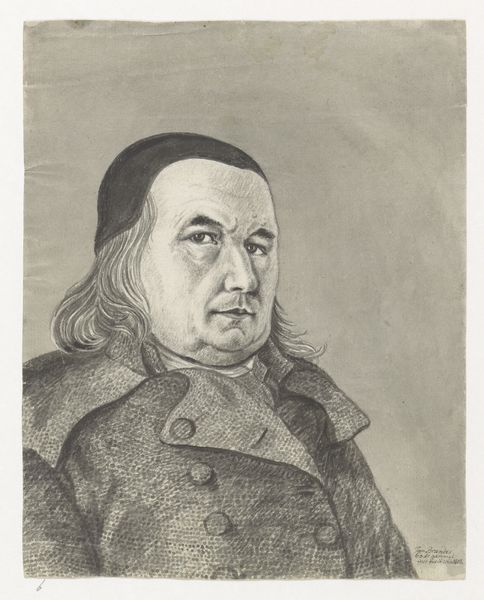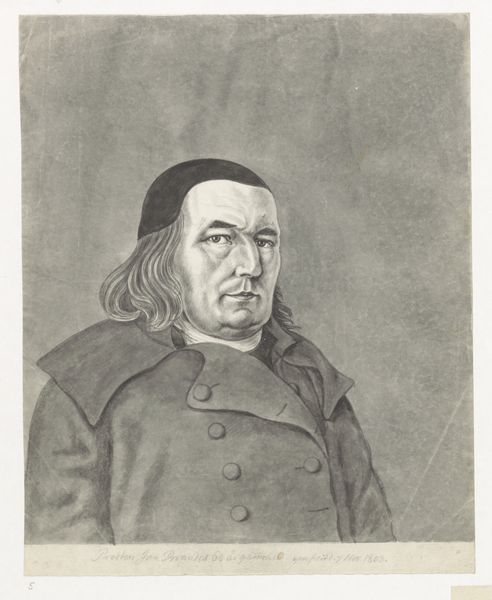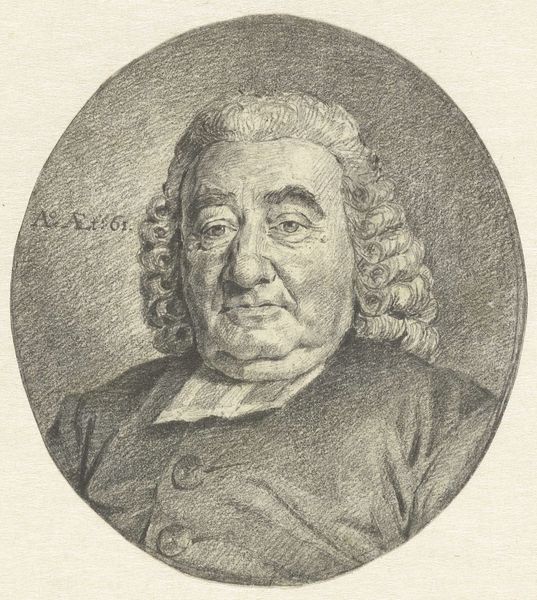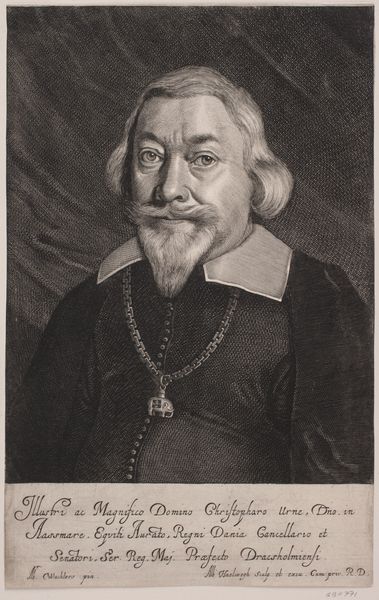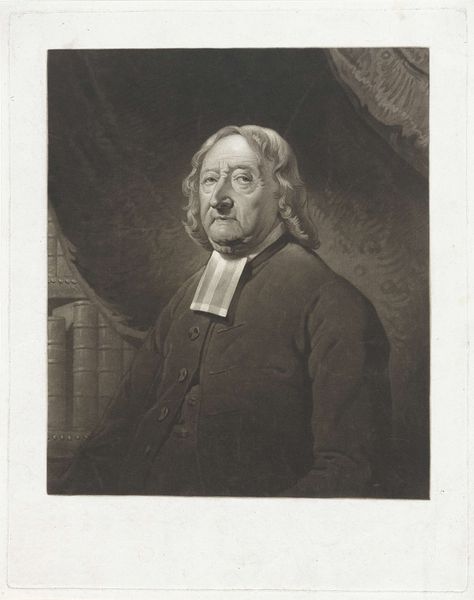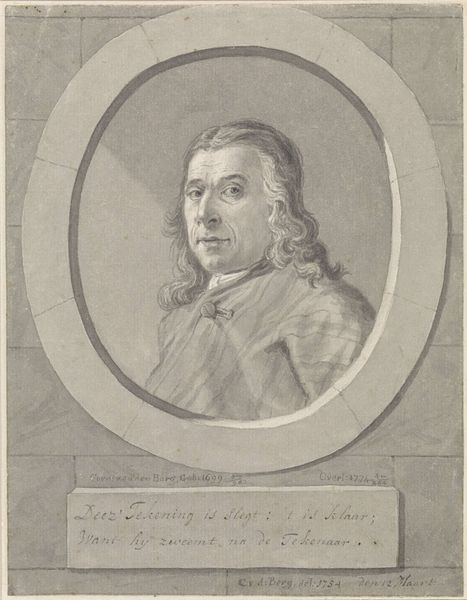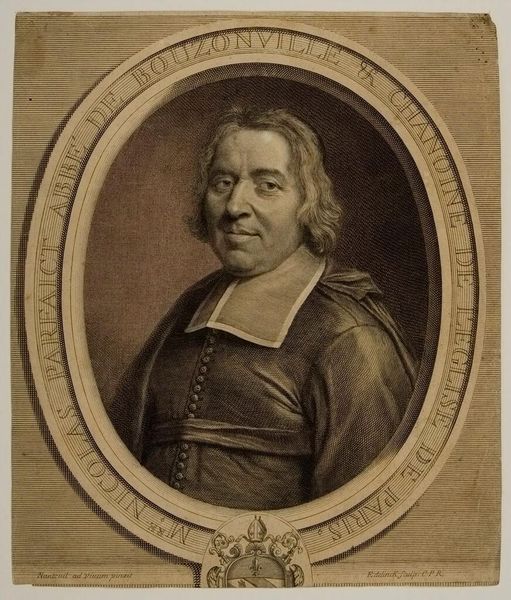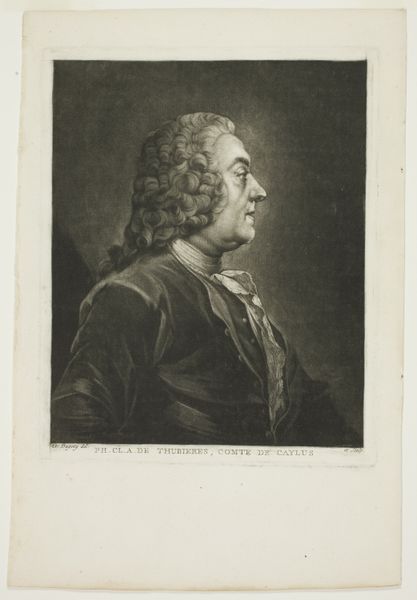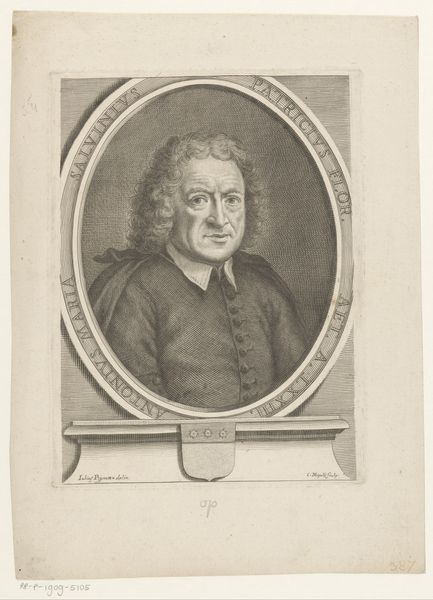
print, engraving
#
portrait
#
baroque
# print
#
portrait reference
#
limited contrast and shading
#
northern-renaissance
#
engraving
Dimensions: 322 mm (height) x 212 mm (width) (bladmaal)
Curator: Here we have Albert Haelwegh’s engraving "Tage Thott," dating back to sometime between 1655 and 1659. It’s currently held here at the SMK, Statens Museum for Kunst. Editor: It strikes me as an image of immense, quiet power. The detail in the face is quite something, and yet there's also a reserve, a sense of someone very aware of their position. Curator: Indeed. The subject, Tage Thott, was clearly a man of considerable status. Note the inscription; the chain around his neck. Such elements speak volumes about the man and his standing in society. The elephant is an emblem that carries a symbolic load—wisdom, memory, long life. Editor: Yes, and the meticulous technique, the delicate network of lines used to create the shading, would have taken considerable time and skill. It speaks to a patronage system, doesn't it? Where artisans relied on the elite for their livelihood. It's not just an image, but an object born out of a specific set of economic and social relationships. Who paid for it, how many copies were made, how were they distributed? These things give us the wider material conditions of its creation. Curator: Precisely. And the portrait itself—beyond mere representation—functions as a signifier of power and lineage. The gaze, for example, directs the viewer—we must recognize this individual, and acknowledge his rank. The rendering of textures adds a psychological element to it. Editor: You can almost feel the weight of that chain. The subtle modelling of the face draws us into the experience of observing his features as well. It shows the cultural appreciation of wealth as both a visual and tangible aspect. Curator: These visual emblems serve as enduring anchors to specific social identities—and the ideals to which they are attached. Editor: Understanding how objects like this were made, distributed and used offers really valuable insights into the realities of early modern life, though, and adds extra depth to an otherwise quiet work of art. Curator: Absolutely. A seemingly still portrait speaks volumes. Editor: Right, and what starts as an image ends up an artifact with social significance.
Comments
No comments
Be the first to comment and join the conversation on the ultimate creative platform.
